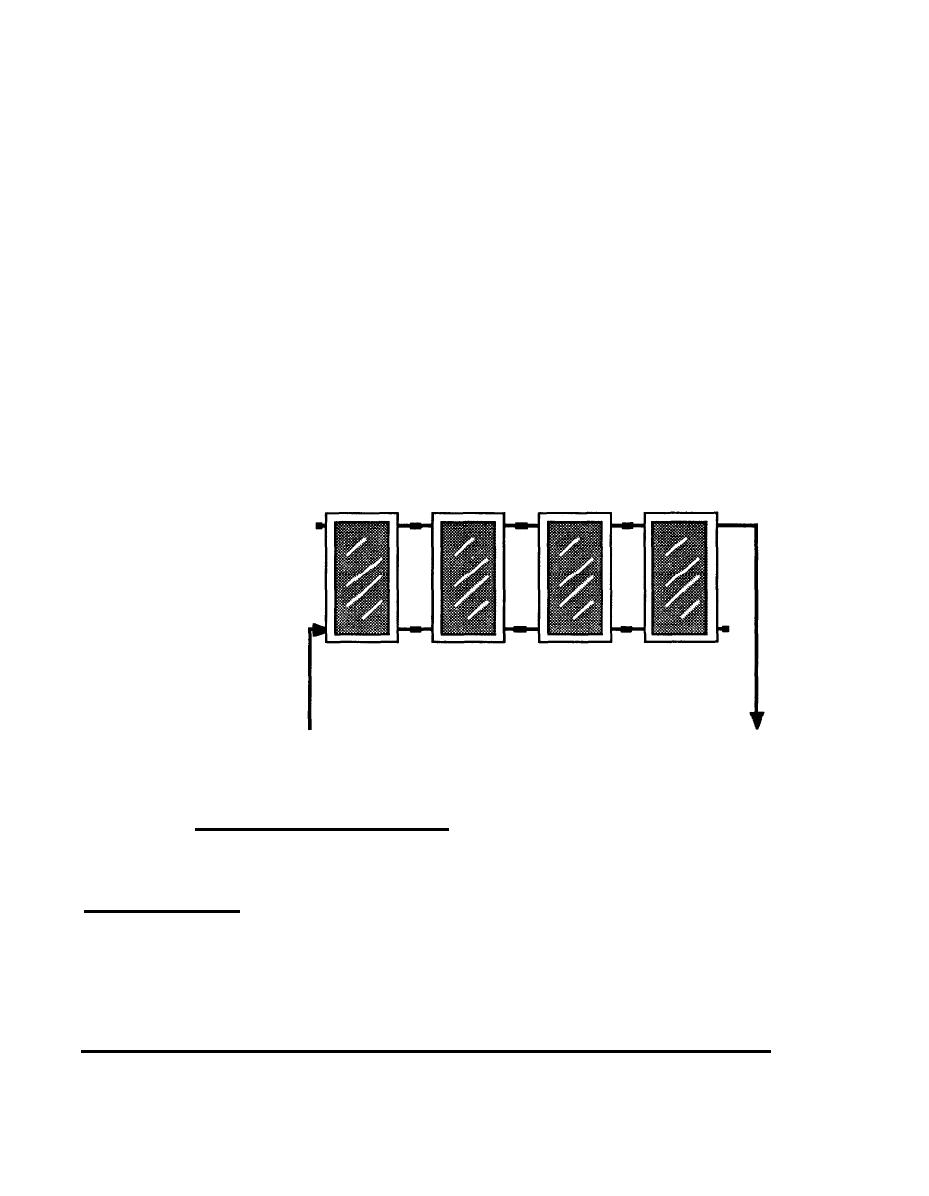

Custom Search
|
|

|
||
 Whenever the collectors are warmer than the storage, the control turns on the pump
to gather solar energy. If the collectors are cooler than storage, the pumps remain
off. Predetermined temperature differences, called differentials, are chosen by the
system designer.
All solar heating systems share other characteristics. For example, collector piping
should always deliver cool liquid to the bottom of the collectors. The heated fluid
should be removed from the top. This takes advantage of the natural inclination of
the warmed liquid to rise.
Most collector piping is designed to flow through multiple collectors in parallel, rather
than one after the other in series. Because solar collectors operate at relatively low
temperatures, this method allows them to operate as efficiently as possible.
Finally, piping delivers and picks up fluid from diagonally opposite corners of a group
of collectors, to be sure the liquid flows evenly through all the collectors (Figure 2-4).
FIGURE 2-4
A Properly Piped Flat-
Plate Collector Array.
Most collectors have
the four ports as
shown, to simplify
correct piping.
2.1.3 Common Load Connections, The most common uses ("loads") for
the energy stored in the storage tank are for domestic hot water (DHW), process
water heating, space heating, space cooling and swimming pool heating.
Domestic Hot Water
In DHW applications, the storage tank is usually installed in the cold water supply.
The cold supply is "pre-heated" with solar energy before a standard, "back-up" or
"auxiliary," water heating system receives it. If the solar system supplies adequate
heat, the auxiliary system remains off. If the solar system cannot supply the
OPERATION
8
2.1 BASIC SYSTEM CONFIGURATION
|
 |
|
 |
||